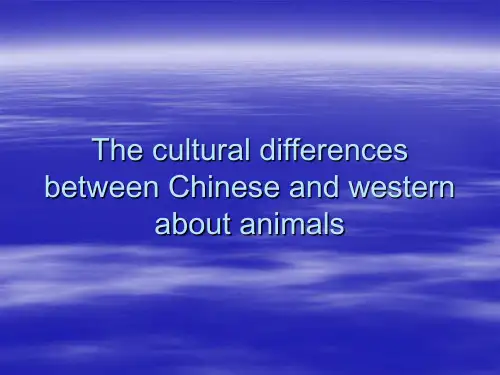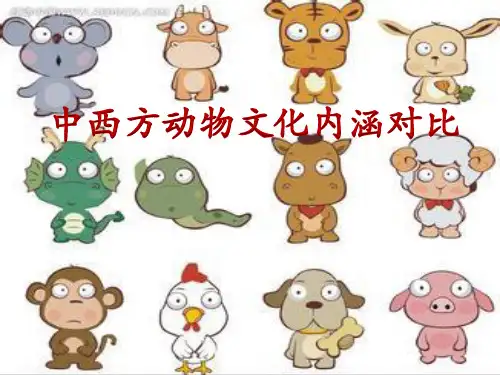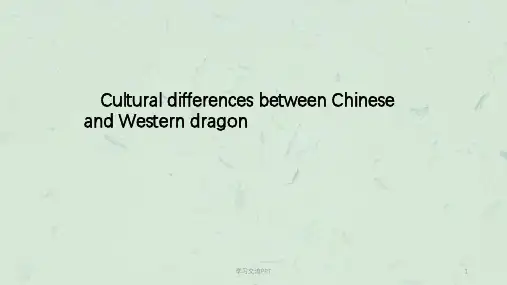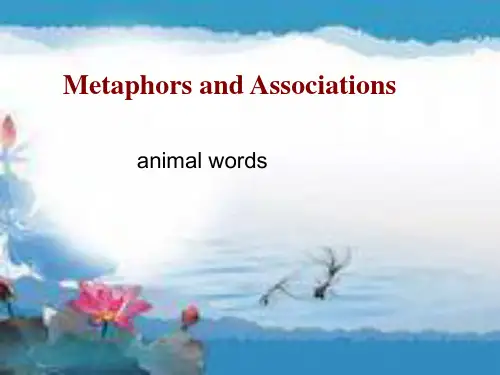RAT
❖ 在美国俚语中,rat与bitch相似,指行为 不端的女人,另外“rat”也经常出现在骂 人的脏话中,如:
Oh, you (dirty) rat ! (哦,你这个混蛋) 或直接骂“Rat”(表胡说,瞎扯) ❖ rat在英语中还表示鼠类小人,叛徒,工 贼等出卖或告发同伴的反面角色。
此外,与“rat” 有关的英语俗语与习语中,也能 明显表达出“rat”的贬义色彩。 如:a rat-like person
去邪免灾 例:狗血涂于门上驱逐不详
爱仗人势 例:狗腿子、走狗、狗奴才
愚昧、残忍、奸诈的化身 例:狗苟蝇营(比喻为了名利不择手段,象苍蝇 一样飞来飞去,象狗一样不知羞耻。)、狗头军 师、天狗食日、狗胆包天
使妇女不孕 例: 从前许多不育的妇女都供奉“张仙”来祈子, 称为“送子张仙”,没有塑像。画上的“张仙”, 是一位角巾袍服的美男子,他手执弹弓,仰头对 天作瞄准姿势。据说是他在用弹弓去射杀“天 狗”。因此北方习俗供奉“张仙”,除了香花酒 肴,还有一盘五个用生面揉成圆球,是送给他用 来射“天狗”的。
Dragon
Europe . In Western folklore, dragons are usually portrayed as evil, with exceptions mainly in Welsh folklore
and modern fiction.
➢ In the modern period, the European dragon is typically depicted as a huge, fire-breathing, scaly, horned, lizard-like creature; the creature also has leathery, bat-like wings, four legs, and a long, muscular prehensile tail. Some depictions show dragons with feathered wings, crests, fiery manes, ivory spikes running down its spine, and various exotic decorations.








